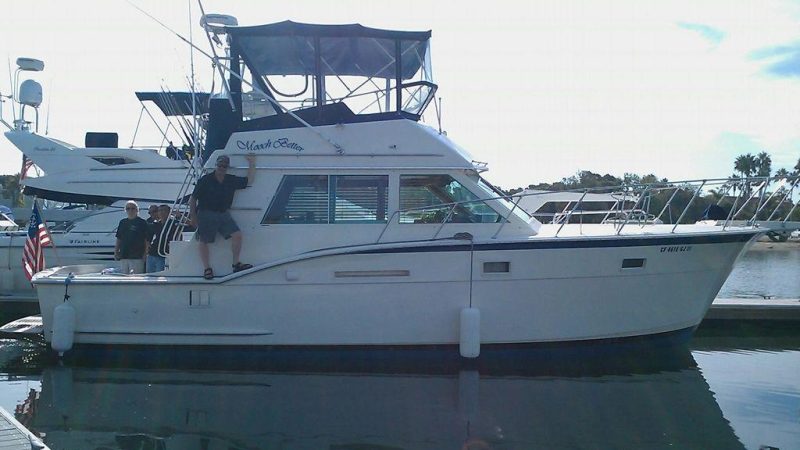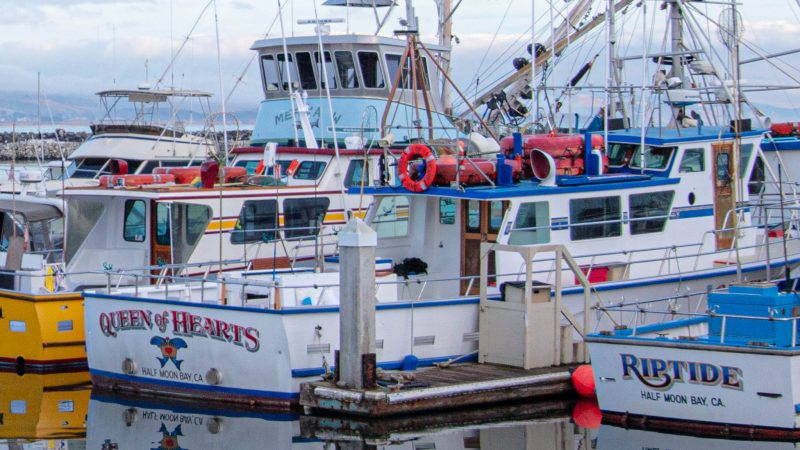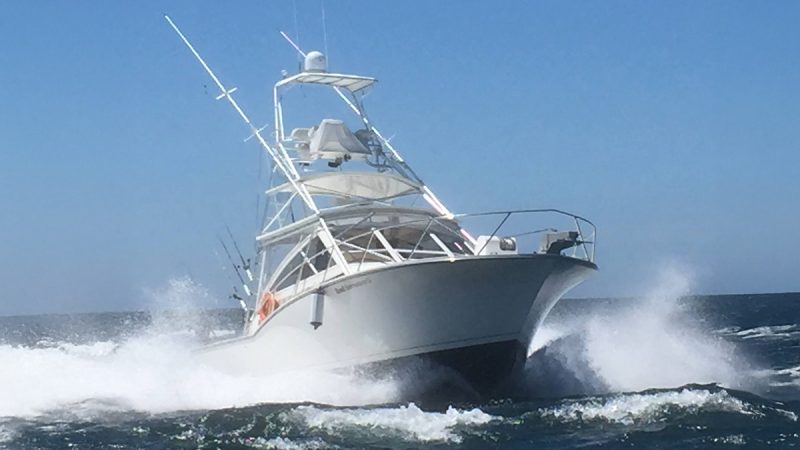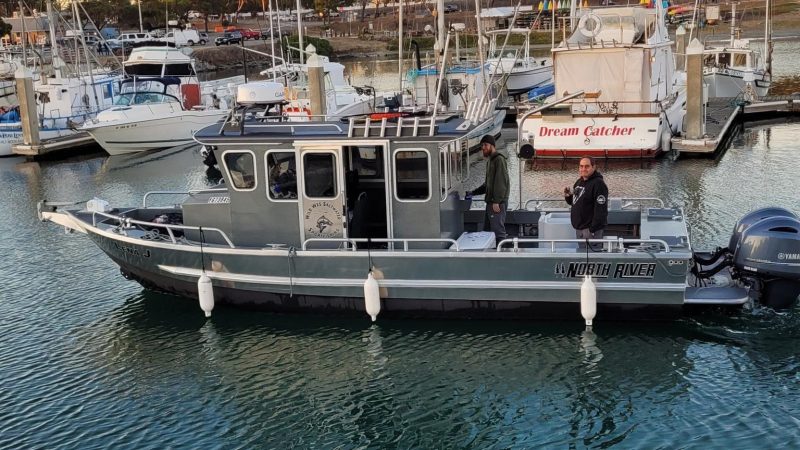One of the Coastide’s most cherished destinations is Pillar Point Harbor, a vibrant marina that teems with colorful fishing boats, many of which are ready to welcome you aboard.
Whether you’re looking to reel in a longfin tuna, or witness the awesome spectacle of migrating whales, you’ll find an expert crew ready to charter the perfect trip.
For those that turn green at the site of a boat, there’s still much to enjoy. Pillar Point is one of the last working harbors in California where you can buy fresh fish and shellfish direct from the boat. Fishline, a handy hotline and mobile app, makes it easy to find out the day’s catch which often includes salmon, rock cod, and, when the season is right, succulent dungeness crab.
Ankeny Street Sportfishing, captained by the experienced Chris Chang, has been a trusted name in Half Moon Bay’s fishing charter scene since 1999. With a career that began as a deckhand in 1992, Captain Chris brings decades of hands-on expertise to every trip, earning a loyal following among serious fishing…
Mooch Better Fishing offers a memorable day on the water aboard its 37-foot Hatteras boat, comfortably accommodating up to six passengers. Specializing in open-party fishing trips and whole-boat charters, the company provides a range of activities tailored to diverse interests. Whether you’re chasing salmon, rock cod, tuna, or simply eager…
The New Captain Pete continues to anchor its legacy in Pillar Point Harbor, Half Moon Bay. This distinguished charter, renowned as a premier choice on the Northern California coast, embarks from the ideal location for exploring the stunning San Mateo County coast. Now operated by Melynda Dodds, the New Captain…
The Queen of Hearts is a 50-foot sportfishing vessel that docks at Pillar Point Harbor. They offer salmon and rockfishing trips, and during the dungeness crab season crab they offer combo rockfishing trips as well . The Queen of Heart is available for whale watching tours and chartering, and can…
The Reel Screamer II is a 35-foot sportfishing yacht designed to deliver both high-quality fishing and a comfortable, family-friendly experience. With a capacity of six passengers, the vessel provides an intimate and safe setting for anglers of all ages. Beyond fishing, the Reel Screamer II also offers whale-watching excursions and…
Riptide Charters offers an unparalleled experience on the waters of Half Moon Bay, a stone’s throw from San Francisco, CA. At the helm of the Riptide, a 40-foot vessel boasting a fiberglass hull and turbo diesel engine, is Captain William Smith, fondly known as “Capt. Smitty.” With over 50 years…
Wild Wes Saltwater Sportfishing offers an unforgettable offshore adventure from G dock at Princeton Harbor, targeting rockfish, lingcod, halibut, salmon, tuna, and crab. Captain Wesley Langell and his skilled crew provide a top-tier fishing experience tailored to both seasoned anglers and first-time fishers. Their personalized guidance, high-quality equipment, and deep…
The Whale Watching Season
Half Moon Bay is the perfect spot for witnessing the journey of these spectacular creatures. Beginning in January and running through the end of March, approximately 15,000 gray whales swim south from the icy waters of the Arctic to mate and nurse their young in the warm, shallow lagoons along Magdalena Bay in Baja, California. Their migration pathway follows closely along the California coast, providing us with outstanding opportunities for coastal whale watching.
The Whale Migration
The full round-trip migration from the Bering Sea to the Baja calving lagoons is approximately 10,000 miles, the longest known migration for any mammal. Gray whales move at a steady speed of about five miles per hour, and most can be spotted in an area that extends from the kelp beds (about 3/4 miles from the shoreline) out to the horizon. For those who like to plan ahead, March through early April is a great time to spot humpback whales as they begin moving closer to shore.
You can view whales from a distance along the many bluff accesses up and down the Coastside from Montara to south of Half Moon Bay for many miles.







